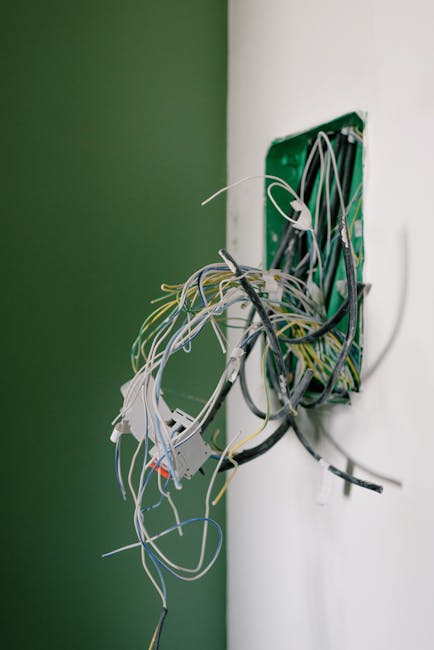CARA MUDAH MENDIAGNOSA PENYEBAB KERUSAKAN POWER SUPPLY SWITCHING

CARA MUDAH MENDIAGNOSA PENYEBAB KERUSAKAN POWER SUPPLY SWITCHING
Power supply switching (SMPS) is the unsung hero of modern electronics. They're the silent workhorses converting your wall's AC voltage into the stable DC power needed by everything from your computer to your television. But, like any hardworking component, they can fail. And when they do, figuring out why can feel like navigating a digital labyrinth. Fear not, fellow tech enthusiast! This guide will equip you with the knowledge to confidently diagnose common power supply switching failures, transforming you from a bewildered bystander into a troubleshooting master.
Understanding the Basics: What Makes a Switching Power Supply Tick?

Before diving into the troubleshooting, let's quickly recap what makes a switching power supply different from a traditional linear power supply. Think of a linear supply as a straightforward dimmer switch – it essentially wastes excess energy as heat to reduce the voltage. A switching supply, on the other hand, is more like a sophisticated light switch rapidly turning on and off (hence the "switching") to regulate the voltage. This on-off cycle is controlled by a switching transistor, and the output voltage is smoothed by capacitors and inductors.
Key components of a switching power supply include:
- Input Rectifier and Filter: Converts AC voltage to DC voltage.
- Switching Transistor (MOSFET or BJT): Rapidly switches the DC voltage on and off. This is the heart of the SMPS.
- Controller IC: Regulates the switching frequency and duty cycle to maintain the desired output voltage.
- Transformer: Provides isolation and steps down (or up) the voltage.
- Output Rectifier and Filter: Converts the switched DC voltage back to a stable DC output.
- Feedback Circuit: Monitors the output voltage and adjusts the switching to maintain a stable output.
Understanding these components is crucial for pinpointing potential problem areas. It's like knowing the key players on a sports team; when something goes wrong, you have a better idea of where to look.
Symptoms of a Failing Switching Power Supply: Decoding the Clues

Just like a doctor diagnoses an illness based on symptoms, you can diagnose a power supply issue based on its behavior. Here are some common symptoms and their potential causes:
- Complete Power Failure: Nothing happens when you turn on the device. This is often the most frustrating symptom, as it offers few initial clues. Potential culprits include a blown fuse, a failed input rectifier, a dead switching transistor, or a faulty controller IC.
- Intermittent Power: The device turns on and off sporadically. This suggests a loose connection, a failing capacitor (often bulging), or a thermally sensitive component that fails when it heats up.
- Low Output Voltage: The device powers on, but doesn't function correctly. This might point to a failing capacitor in the output filter, a problem with the feedback circuit, or a partially shorted diode.
- Overheating: The power supply gets excessively hot. This could be caused by a failing fan (if it has one), inefficient components, or a short circuit somewhere in the output. Think of it as the power supply screaming for help!
- Excessive Noise or Hum: A buzzing or humming sound emanating from the power supply. This is often a sign of failing capacitors or a loose inductor. It's like the power supply is singing a dissonant tune of distress.
Pro Tip: Always disconnect the power supply from the mains before attempting any repairs. Safety first! We want you to fix your electronics, not become a statistic.
Easy Diagnostic Steps: Your Toolbox for Troubleshooting

Now, let's arm you with a practical approach to diagnosing the culprit. Remember, methodical troubleshooting is key. Jumping to conclusions can lead to unnecessary replacements and further headaches.
- Visual Inspection: This is your first line of defense. Look for obvious signs of damage, such as:
- Blown Fuses: A blackened or broken fuse indicates an overcurrent condition. Replace it with the correct rating, but be warned – if it blows again immediately, there's a bigger problem lurking.
- Bulging or Leaking Capacitors: These are usually the easiest to spot. A bulging capacitor is a telltale sign of failure. Even a slightly deformed capacitor should be suspect.
- Burnt or Discolored Components: This indicates overheating, which could be caused by a short circuit or a failing component.
- Loose Connections: Check for any loose wires or connectors. Sometimes a simple reseating can solve the problem.
- Fuse Check: Even if the fuse looks okay, test it with a multimeter to confirm continuity. A fuse tester is even better. This is a quick and easy way to rule out a common cause of failure.
- Voltage Testing: Use a multimeter to check the output voltages of the power supply. Compare the measured voltages to the expected voltages (usually printed on the power supply label). If the voltages are significantly off, there's a problem. Important: Be extremely careful when probing live circuits. If you are not comfortable working with electricity, seek professional help.
- Component Testing with a Multimeter:
- Diodes: Use the diode test function to check the forward voltage drop and reverse leakage. A shorted or open diode will need to be replaced.
- Transistors (MOSFETs and BJTs): Testing transistors requires understanding their pinouts and operation. You can check for shorts between the pins. There are plenty of online resources to guide you through this process.
- Capacitors: While a multimeter can't fully test capacitance, you can check for shorts or open circuits. A dedicated capacitance meter is ideal for more accurate testing.
- Resistors: Verify the resistance value with a multimeter. A burnt resistor may have drifted significantly from its original value.
- ESR Meter (Optional but Highly Recommended): Equivalent Series Resistance (ESR) is a critical parameter for capacitors, especially in switching power supplies. A high ESR can cause a capacitor to fail even if it doesn't look obviously damaged. An ESR meter can quickly identify capacitors that need replacing. Investing in an ESR meter is like upgrading from a bicycle to a motorcycle – it makes the journey much faster and more efficient.
- Load Testing: If the power supply seems to be working, but the device it powers still malfunctions, the power supply might be failing under load. Use a dummy load (a resistor of appropriate value) to simulate the device's power consumption. Monitor the output voltage while the load is applied. If the voltage drops significantly, the power supply is likely failing.
- Using an Oscilloscope (Advanced): An oscilloscope allows you to visualize the voltage waveforms in the power supply. This can help you identify noise, ripple, and other anomalies that a multimeter can't detect. This requires a deeper understanding of electronics and power supply design.
Common Culprits and How to Tackle Them: A Rogue's Gallery of Failure

Let's delve deeper into some of the most frequent offenders in the SMPS crime scene:
- Failed Capacitors: As mentioned earlier, capacitors are the Achilles' heel of many switching power supplies. They dry out over time, especially under high temperatures. Replacing them is often the solution to intermittent power, low output voltage, and excessive noise. When replacing capacitors, choose components with low ESR and high temperature ratings (e.g., 105°C).
- Blown Switching Transistor: This is often caused by an overcurrent condition or a voltage spike. Replace the transistor with an identical part number. Be sure to apply thermal paste to the heatsink to ensure proper cooling. Consider what caused the transistor to blow in the first place – a failing driver IC or other shorted components.
- Faulty Controller IC: The controller IC is the brains of the operation. If it fails, the power supply will likely be dead. Replacing the controller IC requires soldering skills and finding the correct replacement part. Check for any supporting components (resistors, capacitors) around the controller IC that might have also failed.
- Bad Diodes: Diodes in the rectifier or output stage can fail due to overvoltage or overcurrent. Test them with a multimeter and replace any that are shorted or open. Schottky diodes are commonly used in switching power supplies due to their fast switching speed.
- Transformer Issues (Rare but Possible): While less common, transformers can fail due to insulation breakdown or shorted windings. Testing a transformer requires specialized equipment, and it's often more cost-effective to replace the entire power supply if the transformer is the problem.
Innovation in Power Supply Design: The Future is Efficient

The world of power supply design is constantly evolving, driven by the need for greater efficiency, smaller size, and improved reliability. Some key innovations include:
- GaN (Gallium Nitride) and SiC (Silicon Carbide) Transistors: These materials offer superior switching speeds and lower losses compared to traditional silicon transistors, leading to more efficient and compact power supplies.
- Digital Control: Using microcontrollers to control the switching process allows for more precise and dynamic regulation, optimizing performance for various load conditions.
- Resonant Converters: These designs minimize switching losses by operating at resonant frequencies, resulting in higher efficiency and lower EMI (electromagnetic interference).
- Wireless Power Transfer: While still in its early stages, wireless power transfer is poised to revolutionize how we power our devices, eliminating the need for cables and connectors.
These innovations not only improve the performance of power supplies but also contribute to a more sustainable future by reducing energy consumption.
Conclusion: Empowering Yourself to Conquer Power Supply Woes

Diagnosing a faulty switching power supply might seem daunting at first, but with a systematic approach and a little patience, you can conquer this challenge. By understanding the basic principles, recognizing the symptoms, and following the troubleshooting steps outlined in this guide, you can significantly increase your chances of identifying and fixing the problem. Remember to prioritize safety, and don't hesitate to seek professional help if you're uncomfortable working with electricity. So, go forth and troubleshoot, fellow tech adventurers! The power (supply) is in your hands!